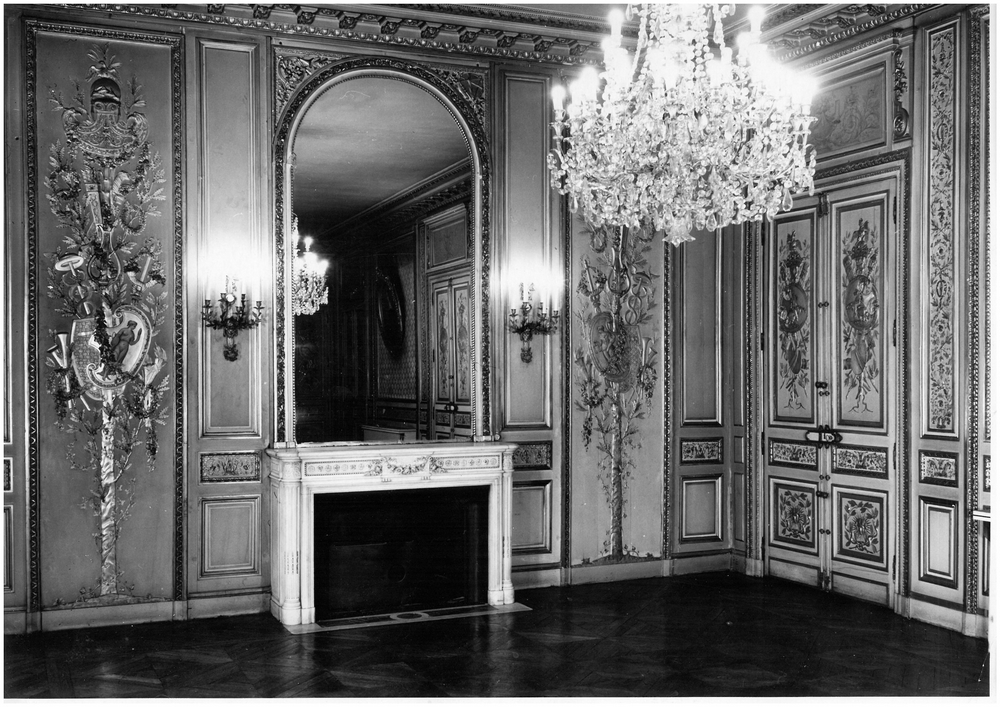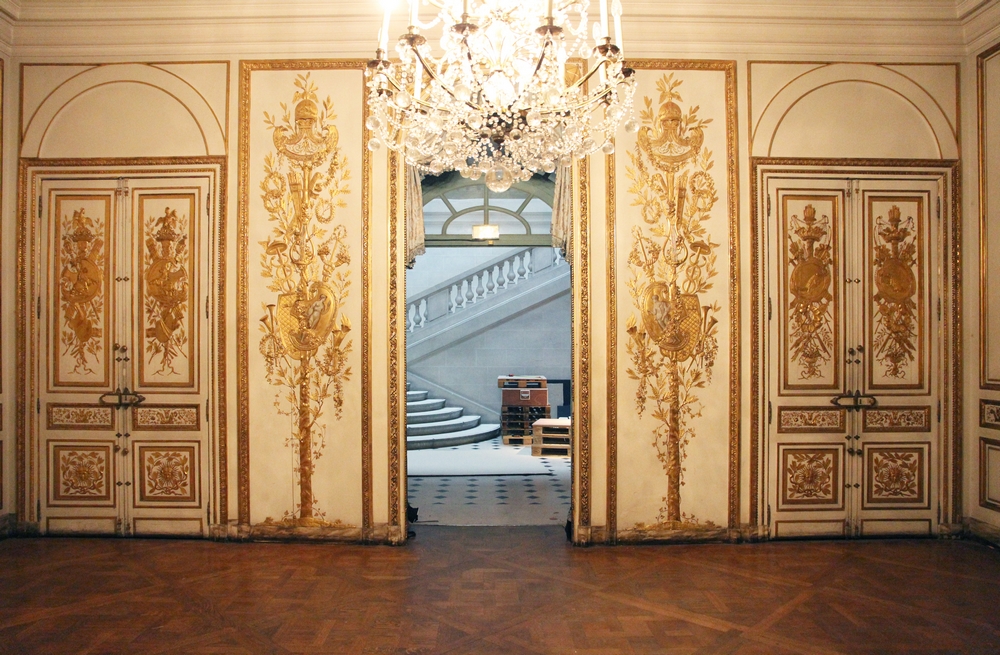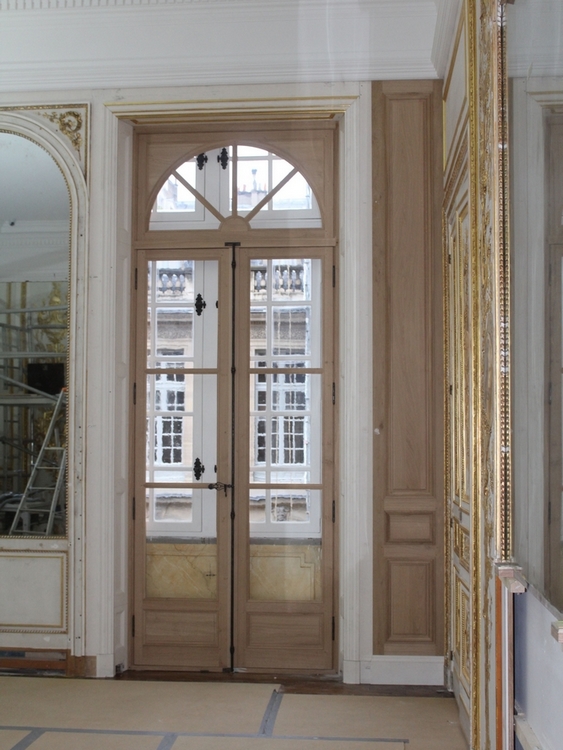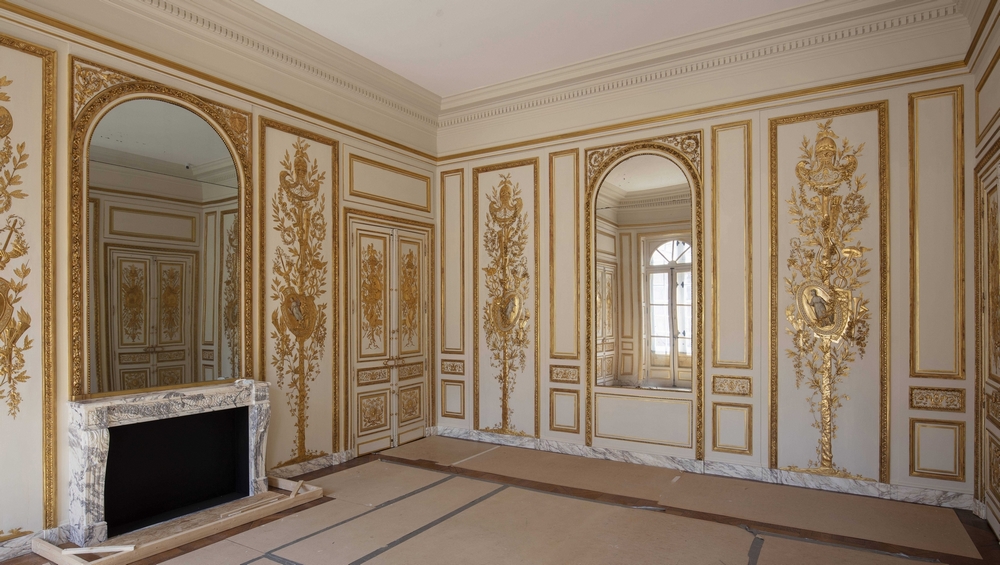To discover or rediscover this exceptional museum and plan your visit, go to the Carnavalet Museum website: https://www.carnavalet.paris.fr/

Reopening of the Carnavalet museum: the Salon d’Uzès visible again!
After four years of work, the Carnavalet Museum finally reopened its doors on 29 May.
All of the 3800 works on display and the large decorations have been restored, such as the woodwork in the Salon d’Uzès, whose rich panels finely carved with laurel and trophies are a reference.
One of the challenges of the Carnavalet renovation was to restore the chronological coherence of the period rooms. These are one of the great treasures of the Paris history museum, which, since its creation, has endeavoured to save remarkable woodwork decorations that were threatened with demolition.
Commissioned by François-Emmanuel de Crussol, the ninth Count of Uzès, as part of the renovation of his private mansion on rue Montmartre in Paris, the decorations for the salon de compagnie were designed by Claude-Nicolas Ledoux from 1768.
At the end of the 19th century, the Hôtel d’Uzès was demolished for the construction of the present rue D’Uzès. The Delessert family, who had owned the building since 1824 and were expropriated in 1869, took care to remove the carved panelling from the salon de compagnie and reassemble it in a building on boulevard Malesherbes. The woodwork was then modified to adapt to its new environment and modern elements were added.

In 1969, the building on boulevard Malesherbes was also destined for destruction. The Delessert family then sold the panelling of the Hôtel d’Uzès company room to the Carnavalet Museum. The panelling was restored and presented in an arrangement similar to that of the Hôtel d’Uzès without restoring the original volumes.

After a historical study carried out by our research department in 2017 and following the removal and storage of the woodwork, our workshop was chosen to carry out the restoration of this emblematic decoration with a view to reassembling it in the museum’s new exhibition area on the first floor.
The project has enabled the reassembly of the woodwork in a more aesthetically pleasing but also more authentic way, including
– The restoration of a full-height mirror in place of the open bay in the north elevation
– The manufacture of false windows with arched transoms as described in the inventories
– The installation of a fake fireplace in carved wood painted in faux-marble made from the 1782 description.


Blank assembly of the woodwork in the workshop – View of a false window.
Previous interventions that endangered the durability of the woodwork were removed and restored in accordance with the rules of art. The ornaments had some lacunae and/or accidents. These were restored by fitting new wood grafts in order to restore the legibility of these rich decorations.
In addition to the restoration of the wooden support, the restoration of the salon also included the restoration of the paintings and gilding and the restitution of a cornice. To carry out this work we joined forces with the Ateliers Mariotti and the Atelier Tollis.
